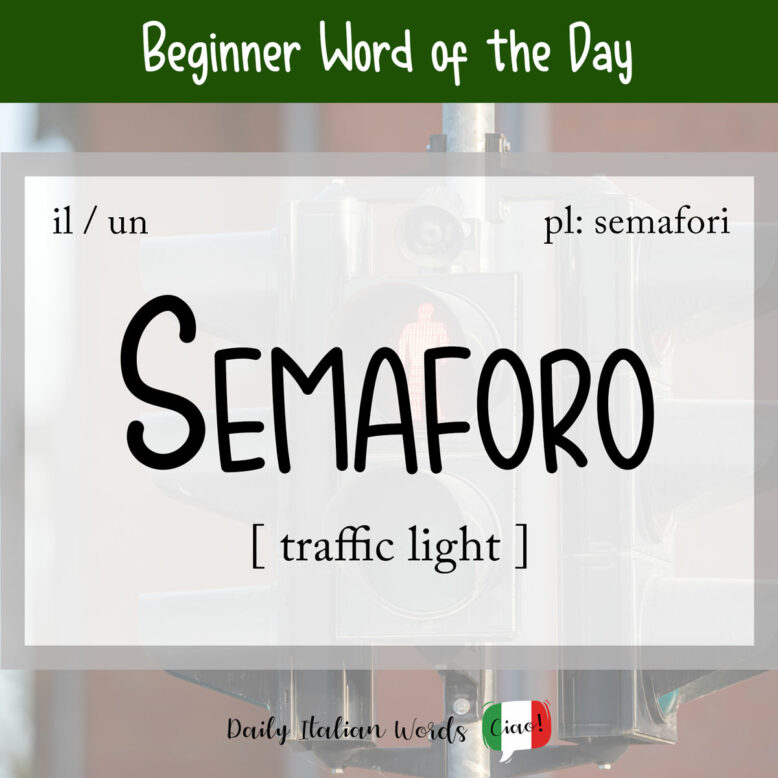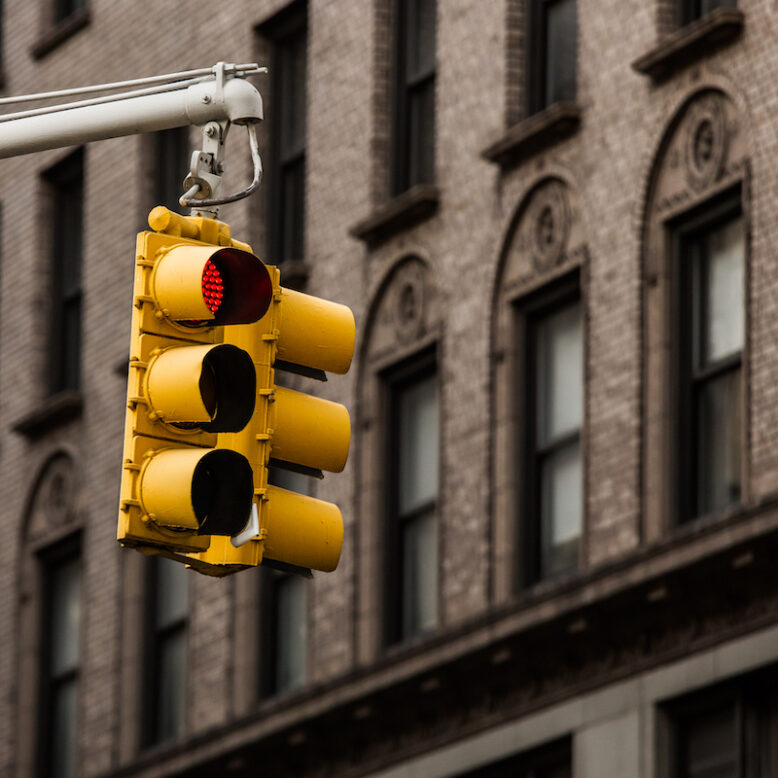Semaforo, also known as a semaforo stradale, is the word for a traffic light in Italian. It is from the French ‘sémaphore’, which was formed irregularly from the Greek sēma ‘sign’ and –phoros ‘bearing’.
If you feel this word looks familiar, that’s because it shares the same origin as the English word semaphore, a system of sending messages by holding the arms or two flags or poles in certain positions according to an alphabetic code.

Because it is a masculine noun, semaforo takes the following articles:
il semaforo
the traffic light
un semaforo
a traffic light
i semafori
the traffic lights
dei semafori
(some) traffic lights
A semaforo can be one of three colours: rosso (red), giallo (yellow), or verde (green).
Guarda che il semaforo è verde. Puoi andare!
Look, the traffic light is green. You can go!

When a light changes from one colour to another, you’ll often hear Italians use the verb scattare, which in this case means to change or to turn. If you use the verb without indicating the colour, it means that the light has switched from red to green, or orange to red. The context will determine which colour is being talked about.
È scattato il giallo proprio mentre stavo attraversando la strada.
The light turned yellow just as I was crossing the road.
Non appena scatta il semaforo, accelera a tutto gas!
As soon as the traffic light goes green, step on it!
Some other verbs you will see used with semaforo include:
- fermarsi al semaforo rosso = to stop at the red light
- bruciare il semaforo = to go through the red light (lit. to burn the traffic light)
- bucare il semaforo = to go through the red light (lit. to make a hole in the traffic light)
- non rispettare il semaforo = to go through the red light (lit. to not respect the traffic light)

As in English, semaforo verde (green light) can be used figuratively to mean “to give permission to go ahead with something”. Likewise, semaforo rosso (red light) is used when an action is refused or ordered to stop. This is used especially in journalistic jargon.
The onda verde is the equivalent of green wave in English, and refers to a series of traffic lights that are synchronised to allow continuous traffic flow over several intersections in one direction.
Se viaggi a 40 chilometri orari, puoi prendere l’onda verde.
If you drive at 40 kilometres an hour, you can catch the green wave.
Finally, a semaforo ferroviario is known as a railway semaphore signal in English. Designed in the mid-1800s, it involves signals that display different indications to train drivers by changing the angle of inclination of a pivoted ‘arm’.
Heather Broster is a graduate with honours in linguistics from the University of Western Ontario. She is an aspiring polyglot, proficient in English and Italian, as well as Japanese, Welsh, and French to varying degrees of fluency. Originally from Toronto, Heather has resided in various countries, notably Italy for a period of six years. Her primary focus lies in the fields of language acquisition, education, and bilingual instruction.


